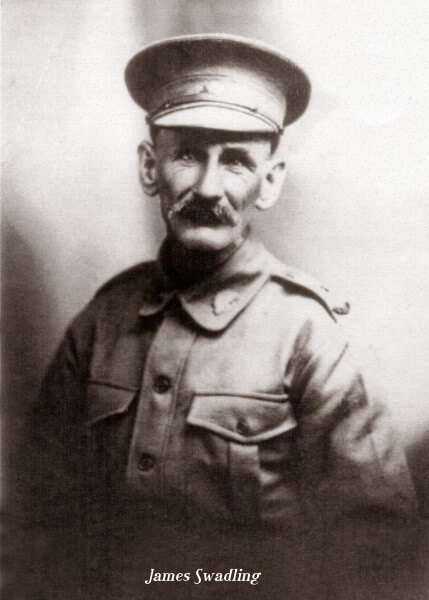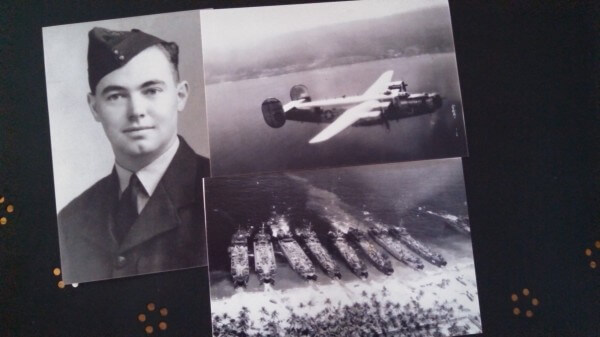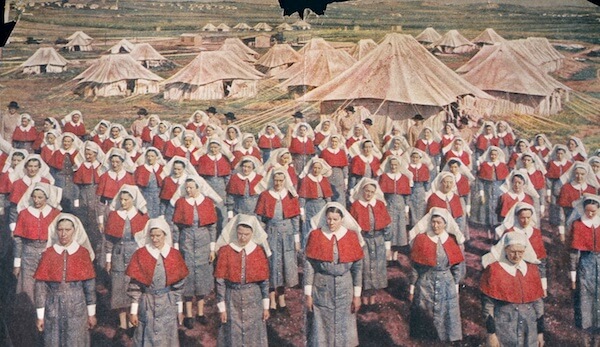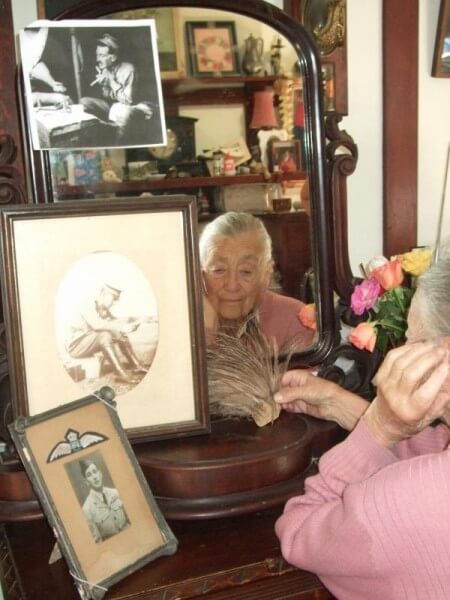
An Old Man of the Bush
James Swadling was born in Erina, Gosford, NSW on 17 May 1857 to parents James Pattison Swadling (an 18-year-old sawyer) and Jane Swadling.
James followed his father into the timber industry, learning bush craft and working as a teamster from the Central Coast through to Sydney. Along the way he met Elizabeth Rose, granddaughter of two convicts. They married on 25 May 1881 in Webbs Creek. James and Elizabeth had ten children in total.
Though 58 years old when he enlisted James thought that his knowledge of horses, teams and blacksmithing would be of vital use to the war effort. With that in mind, he enlisted on 20 September 1915 at Holsworthy, Sydney. He was accepted and his records issued ten days later read "#1405 Trooper James Swadling 5’61/2 tall". James had a dark complexion with brown hair and blue eyes.
He served in the 2nd Remount Division, 5th Squadron which had been formed in Sydney in September 1915. He was listed as a 49-year-old driver (presumably of horses as he had never driven a car) and would earn the princely sum of five shillings a day to live in the desert and fight a war at close hand.
These reinforcements, containing a high proportion of Boer War veterans and expert horsemen, embarked on 10 November 1915 on the HMAT Orsova from Sydney. As was the case, the older men with experience of horses were put in charge of these valuable animals and not allowed in the main theatre of fighting.
By the time they arrived in Egypt however, the evacuation of Gallipoli was imminent. When the Light Horse left for Gallipoli in 1915, they left behind detachments to take care of the horses. To free these men to rejoin their regiments two remount units were formed, each of four squadrons. Accordingly, at the end of March 1916 the units were reduced by half, each contributing two squadrons to a single remount unit.
Following the evacuation of Gallipoli in December 1915, the Australian and New Zealand forces in Egypt underwent a period of reorganisation and expansion. It was decided to expand the Australian Imperial Force from two infantry divisions to four, and then five.
Fortunately in James’ case (or so it was thought) the maximum age for enlistment was set at 50, and the units still contained a high proportion of Boer War veterans and expert horsemen needed elsewhere. I ANZAC Corps was initially commanded by General Alexander Godley and comprised the three “veteran” ANZAC divisions, the Australian 1st and 2nd Divisions and the newly formed New Zealand Division.
The corps’ divisions were initially manning the defences east of the Suez Canal against the anticipated Turkish invasion of Egypt. James was in the Second Remounts in support of those fighting campaigns in the Sinai and Suez Canal area. Members of the division carried out their first offensive action, crossing the Suez Canal, in the Jifjafa raid between 11 and 14 April 1916.
It is said that the distinguished reputation of Australian horses in the Sinai and Palestine campaigns was in no small part due to the work of the remount units, which were responsible for their training.
On 13 March 1916, under the command of General Sir William Birdwood - the original commander of the ANZACs at Gallipoli - the corps began the process of embarking for France. However, by this time James had been sent to the 3rd Australian General Hospital at Heliopolis, Egypt due to kidney related problems. His wife Elizabeth was informed of this in a letter on 23 March 1916 which only stated he was “suffering from mild illness”
He was still serving overseas when his father James P. Swadling died on 14 May 1916 in Leichhardt back home in Australia. On 9 June 1916 James was recommended for discharge from the Abbassia station on the grounds he was “permanently unfit and too old for active service.” They had discovered his real age was 59 and he was sent home from Suez per HT Sydney on the grounds of “Senility and Eramillis Kidney”.
So there is no great, heroic, action movie war story for James Swadling - he wasn’t a young man seeking adventure as was the case for so many. He probably didn’t think he could go over there by himself to win the war in a couple of weeks either.
He was a simple man of the bush who, despite his advanced years, answered the call when his country asked and thought his skills could somehow make a difference. At the time many army recruiters were happy to take older, more experienced men, so didn’t do too much inspection of the applicant.
James was aged about 69 when he died on 30 May 1926 of Broncho Pneumonia in RPA Hospital Sydney. He was buried in the Church of England section of Waverley Cemetery on 1 June 1926.
By Robyn McNamara













